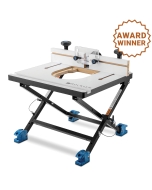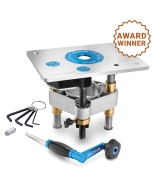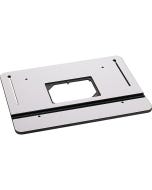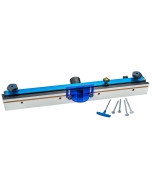Router Table Fundamentals
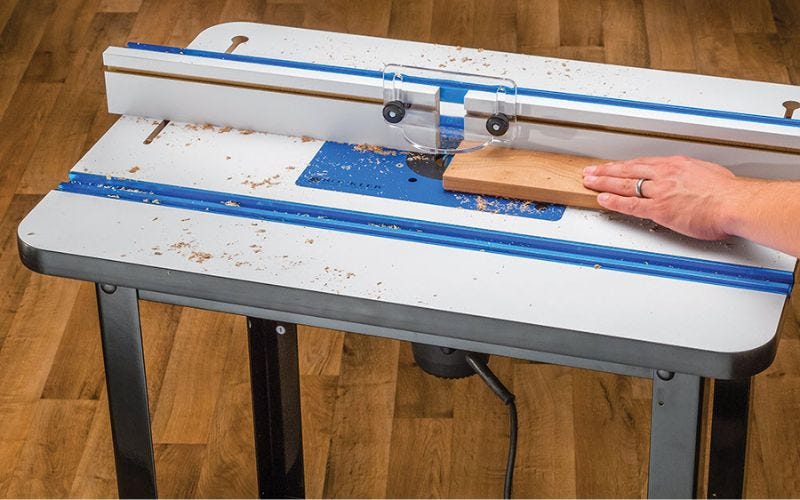
If you’re serious about woodworking, a router table is a game-changer. Sure, a handheld router is great for freehand work, but mounting your router in a table unlocks a whole new level of precision, safety, and versatility. Whether you’re edge profiling, making joinery, or creating repeatable cuts, a router table is one of the most useful tools in your workshop. Let’s break down the fundamentals and why every woodworker — beginner or pro should have a router table in their shop.
What Is a Router Table?
A router table is exactly what it sounds like: a table designed to hold a router upside-down, so the router bit protrudes through an opening in the surface. This setup allows you to guide your workpiece instead of maneuvering the router by hand, giving you better control and accuracy. A router table typically consists of:
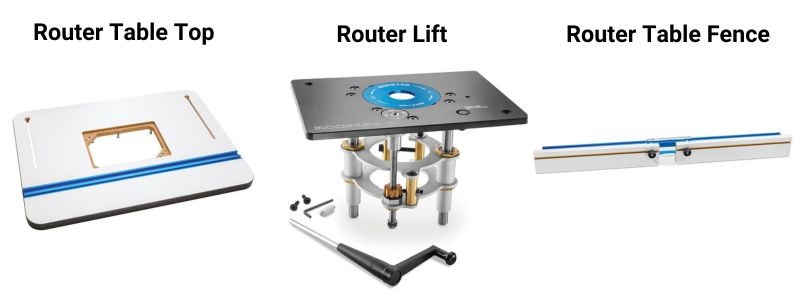
- A Router Tabletop – Provides a smooth surface for stable workpiece movement.
- A Router Plate or Lift – Holds the router securely & allows for easy bit changes and adjustments.
- A Router Table Fence – Guides the workpiece and helps with straight, precise cuts.
- Dust Collection Port – Keeps your workspace cleaner by capturing debris.
Top Uses for a Router Table
If you frequently work with wood and want to achieve professional-looking results with less effort, a router table is an investment that will pay off in both time saved and the quality of your finished pieces. Below are some of the benefits and uses of a router table.
Edge Profiling - Want to add decorative edges to your projects? With the use of different edge profiling router bits, A router table makes it easy to create smooth, consistent profiles on trim, tabletops, cabinetry and more.
Joinery Cuts - A router table makes precision joinery a breeze. You can cut dados, rabbets, dovetails, and box joints with ease, ensuring tight, professional-quality connections for cabinets, drawers, and furniture.
Repeatable, Consistent Cuts - When you need uniform pieces, whether cabinet doors or trim, a router table ensures every cut is identical. The fence and router guides help maintain accuracy from one piece to the next.
Safer Routing - Freehand routing can be tricky, especially on small workpieces. A router table keeps your hands away from the router bit and provides better stability, reducing the chance of slips or mistakes.
Increased Control Over Larger Pieces - Handling large boards with a handheld router can be cumbersome. With a router table, you can keep the workpiece steady against the fence, making it much easier to work with big panels, moldings, and doors.
Small Workshop? No Problem
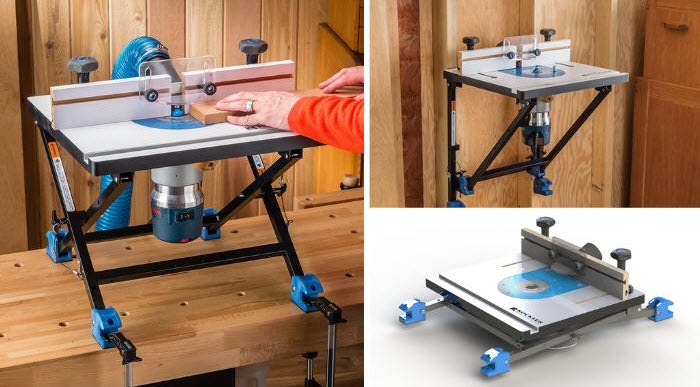
If you’re working in a small shop, every inch of space matters and A full-size router table might not be an option, but that doesn’t mean you have to compromise on quality or versatility. That’s where the award winning Rockler Convertible Benchtop Router Table comes in — a compact, space-saving solution designed to give you the functionality of a full-size router table in a footprint that works for small shops, garages, and even job sites.
This router table is small but mighty, offering a sturdy, stable work surface for precision routing. The best part? It’s convertible. You can set it up on a benchtop, fold the legs for storage, or even mount it to a wall to free up workspace. For woodworkers with limited space the convertible benchtop router table is a game-changer.
Another space-saving option for a larger router table top, is the Rock Steady folding steel stand. In addition to supporting router tables, it can support T-track tables and other work surfaces. It holds up to 200 pounds and folds for compact storage.
Unlock Your Router’s Full Potential with Jigs and Accessories
A router and router table are already powerful tools in any woodshop, but with the right router jigs and router accessories , you can take your woodworking to a whole new level. These add-ons not only expand what you can do with a router and router table but they also make tasks faster, easier and more enjoyable.
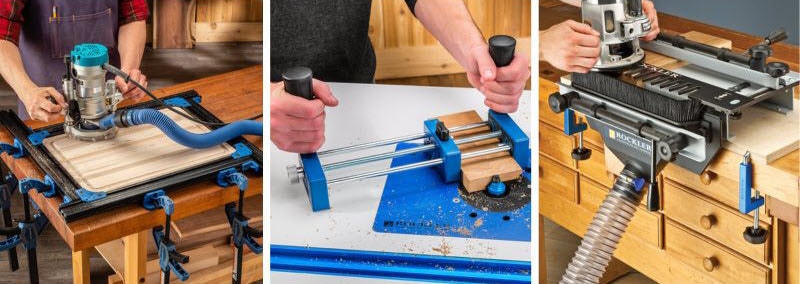
A Juice Groove Jig: A juice groove jig creates a shallow, curved channel (juice groove) around the perimeter of a cutting board. The jig ensures an even, professional-looking groove by controlling the router’s movement, preventing mistakes like uneven depths or wobbly lines.
Small Workpiece Holder: The small piece holder keeps your fingers out of harm's way and securely holds your smallest workpieces while you machine them at the router table.
Dovetail Jig: A dovetail jig helps create precise and strong dovetail joints, commonly used in drawers, cabinets, and fine furniture. It works by guiding a router along a pattern to cut interlocking tails and pins that fit together seamlessly.
Bench cookies: are incredibly useful at a router table. They can raise workpieces for edge routing, hold pieces securely, provide clearance for bit depth, absorb vibrations and more!Shop Customer Favorites From The Bench Cookie Family
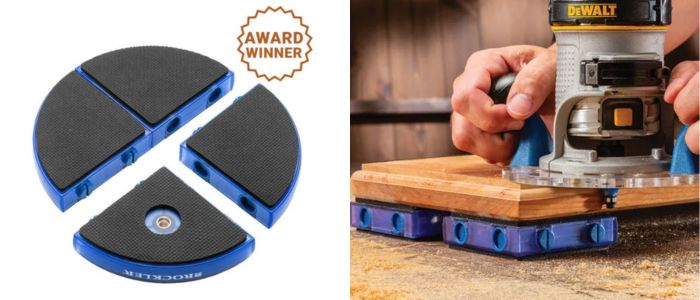
If you’re serious about improving your craft, investing in a router and router table is one of the best decisions you can make. So, set up your workspace, explore new techniques, and watch your woodworking skills soar!
Keep the inspiration coming!
Subscribe to our newsletter for more woodworking tips and tricks
